Brands Must Support Advancement of Customary Rights Recognition in Leuser Ecosystem
Indigenous communities in the Sumatran province of Aceh may soon receive formal recognition of their customary rights, an historic first for the region. As reported recently by Mongabay, “The Ministry of Environment and Forestry has a target of recognizing the customary forests of 15 Indigenous communities this year. Among the targeted communities are those in Aceh, on the northern tip of Sumatra,” said Yuli Prasetyo Nugroho, the ministry’s head of customary forest management. This is a positive development as there are many communities across Aceh––including in and around the Leuser Ecosystem––that are awaiting the recognition of their customary rights by government authorities. Determination of customary forests is an important step because the government must recognize these rights in order for Indigenous peoples to have legal rights to manage their forests.
Science and history have long demonstrated that the most effective and efficient way to protect forest ecosystems for the long term is to protect the land rights of the Indigenous and frontline communities who depend on them. Indigenous Peoples’ and local communities’ customary territories are estimated to contain 36 percent of the world’s remaining intact forest landscapes, and one of the best ways to keep forests standing is to secure legal recognition of the rights for customary communities to manage their forests and protect them from corporate exploitation for plantations, mines, and other developments.
Aceh is home to The Leuser Ecosystem. The Leuser Ecosystem provides food and water for millions of people. Generations depend on this uniquely biodiverse forest ecosystem for their livelihoods and have done so for millennia as it is the customary lands for the Gayo, Alas, Aceh Kluet, Tamiang, Singkil and Aneuk Jamee peoples. These communities, and others in North Sumatra, have fought for over a century to protect the integrity of the Leuser Ecosystem’s extraordinary forests, peatlands, wild rivers, and montane environment.
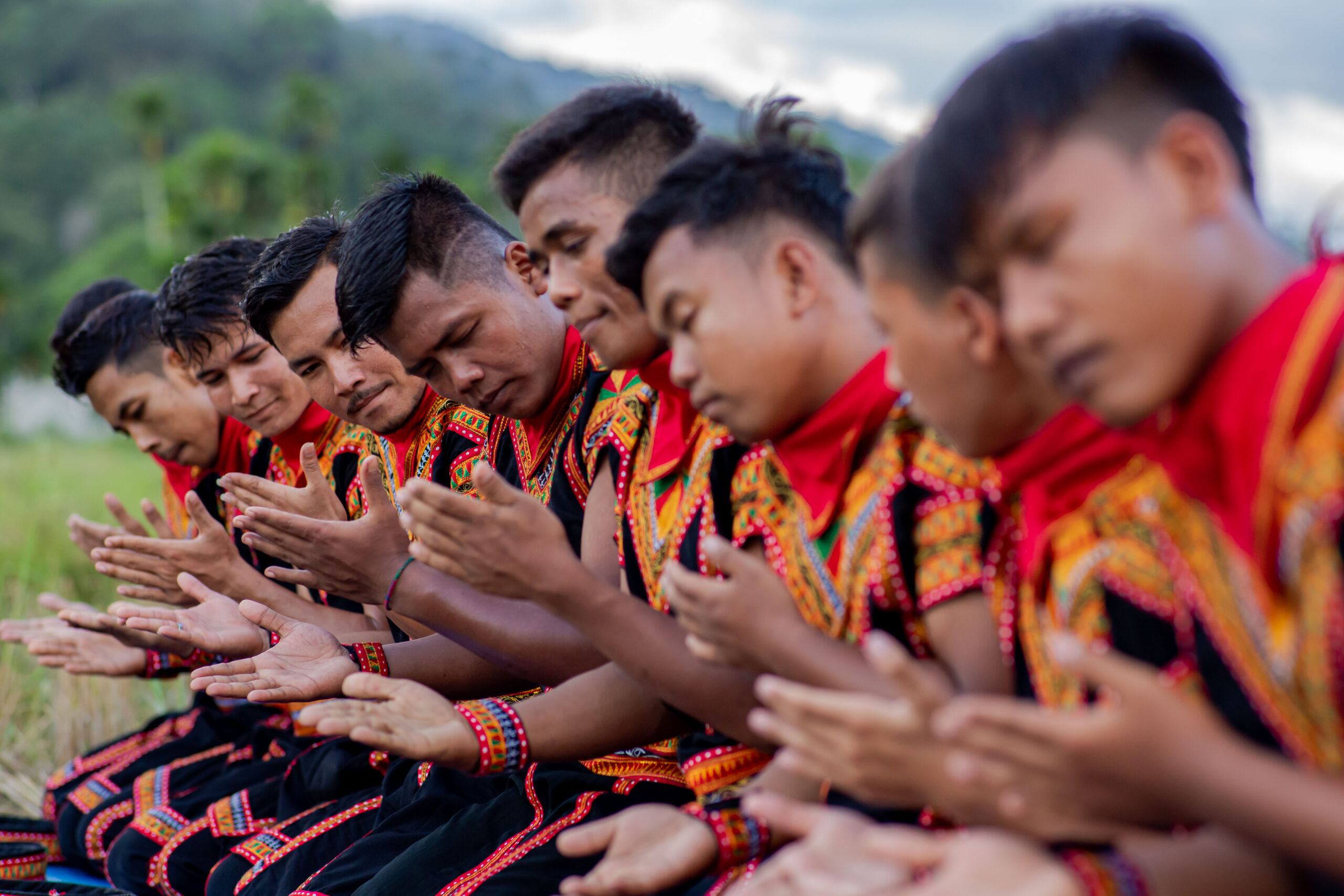
Indigenous community in Gampong Bunin, East Aceh featuring Saman Dance. It is a dance of Gayo tribe (Gayo Lues) commonly shown while celebrating important customary events. (RAN/Rifky)
Local organizations in Aceh are supporting communities to advocate for legal recognition of their rights. To date, nearly 350,000 acres of Aceh’s forests have been proposed as customary forests that require recognition from the government. The current proposed customary forests are in 13 mukims in four districts, namely Pidie, Aceh Besar, Aceh Barat and Aceh Jaya. The Indicative Maps and Social Forestry Areas (PIAPS) that have been prepared by the Indonesian Ministry of Environment and Forestry (Kementerian Lingkungan Hidup dan Kehutanan) recognize most, but not all, of these areas. A dedicated network of local civil society organizations are working together on additional proposals for customary forests in the districts of Aceh Selatan, Aceh Barat Daya, Aceh Utara, Aceh Timur, Aceh Tamiang and Nagan Raya. It is critical that efforts advance the legal recognition of customary rights for Mukim across all of these districts.
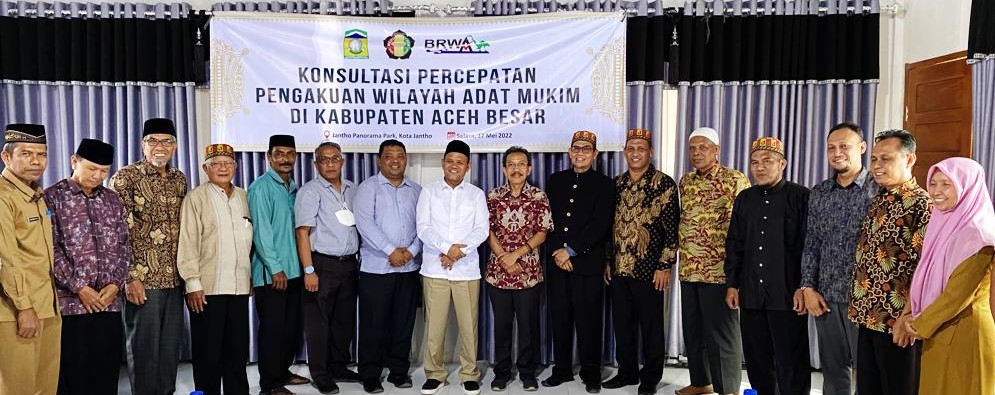
Customary Area Registration Agency (BRWA) together with the Aceh Traditional Council (MAA) of Aceh Besar Regency and the Indonesian Bamboo Rumpun Foundation (YRBI) held a dialogue with the Regent of Aceh Besar in Jantho City. July 2022. Credit: BRWA https://www.brwa.or.id/news/read/529
A mukim is an administrative division that is unique to Aceh––a province of Indonesia that has a special autonomous status which gives the local government greater authority, including in the management of its forests which stretch over 10 million acres. Mukim is also a legal community unit consisting of a combination of several Gampongs (villages) that have certain territorial boundaries and their own assets, under direct governance of the Sub-district government and usually led by Imeum Mukim. This community unit had the highest authority over forest areas during the period of time when Aceh was an autonomous government. The tradition of the mukims generally originates from the coastal regions in Aceh, especially in Aceh Besar and Pidie Raya areas.
Since the peace agreement was reached with the Indonesian government in 2005––ending a 29 year conflict––mukims have maintained an important role, especially in the stewardship of customary forests as each mukim has customary forest management laws which are very complex and are upheld by communities in accordance with the spirit of protecting the forest. For example, the mukim for Pidie have customary laws that prohibit cutting down trees within a radius of 200 meters from a spring, 100 meters from a river bank, and on certain sloped land. However, after the enactment of Law (UU) of the Republic of Indonesia number 5 of 1979 concerning Village Administration, as well as a number of other laws, the customary order governing mukim and village authorities in Aceh have experienced setbacks.
Under Indonesian law, customary rights can only be designated after they have been recognized through a local government bylaw. In Aceh, such bylaws have been issued for five Indigenous communities: three in Pidie district and two in Aceh Jaya district. Communities with customary territories in other districts are waiting for bylaws to be issued in Aceh Barat, Aceh Jaya, Aceh Selatan, Aceh Barat Daya, Aceh Utara, Aceh Timur, Aceh Tamiang and Nagan Raya.
Another challenge in achieving legal recognition is the government requires customary territories to have clear boundaries without overlapping claims. In some cases the overlapping claims are between villages that have not yet agreed on delineated boundaries. In other cases, conflicts can arise given differences in the historical boundaries of customary territories (wilayah adat) owned by the community as a whole and official administrative boundaries of villages that have been delineated by the government. Additional obstacles occur if the customary territories overlap with concession permits held by companies. One example is the Bunin village, whose territory overlaps with the concession area for a palm oil company called PT. Tegas Nusantara in the district of Aceh Timur.
There is new hope that the challenge of overlapping boundaries can be overcome through securing agreements to revoke palm oil permits, or change the boundaries of palm oil concessions, via jurisdictional programs like the one recently launched by the Bupati of Aceh Timur. This new initiative includes much-needed programs to map customary forests in the north-east of the Leuser Ecosystem.
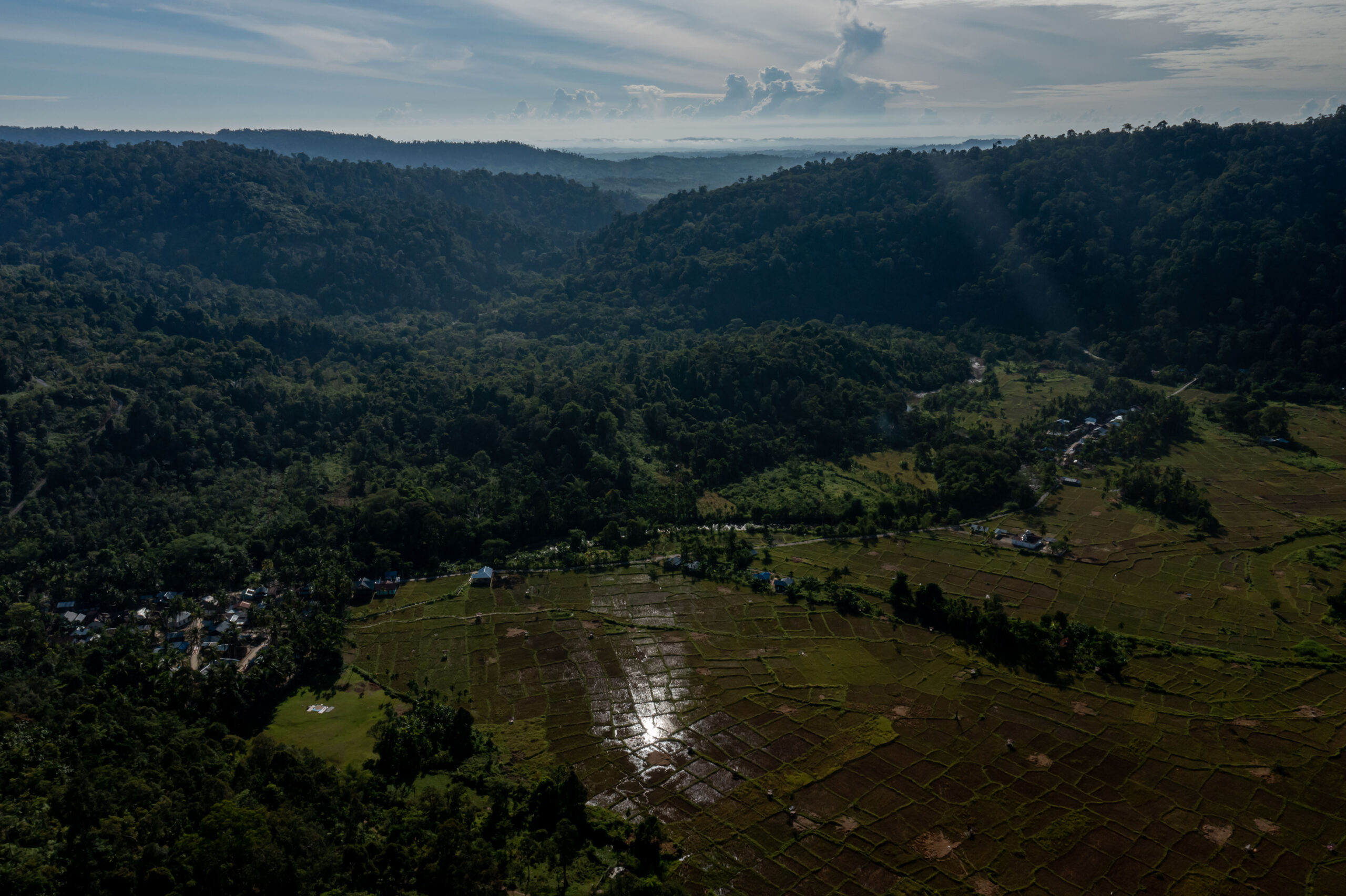
On the border of the Leuser Ecosystem, the Bunin community has succeeded in securing legal recognition by the Indonesian government to manage 6,870 acres of their customary lands under the Village Forest scheme. The Bunin community are mostly descendants of Gayo, one of the tribes that inhabit the highlands of the Aceh province of Indonesia. (RAN/Rifky)
Originally the boundaries for customary territories were recognised by the natural boundaries, not written down, or mapped. In order to be recognised by the government, the boundaries of customary territories must be mapped, demarcated through participatory mapping processes where neighboring communities agree to the boundaries of their territories, and validated by special government authorities. Once they have their rights recognized, communities continue customary traditions, and manage their forests and the community farms which produce high-value commodities such as durian, corn, petai, jengkol, coffee, rubber, cocoa or non timber forest products that provide income and supports the welfare of the community.
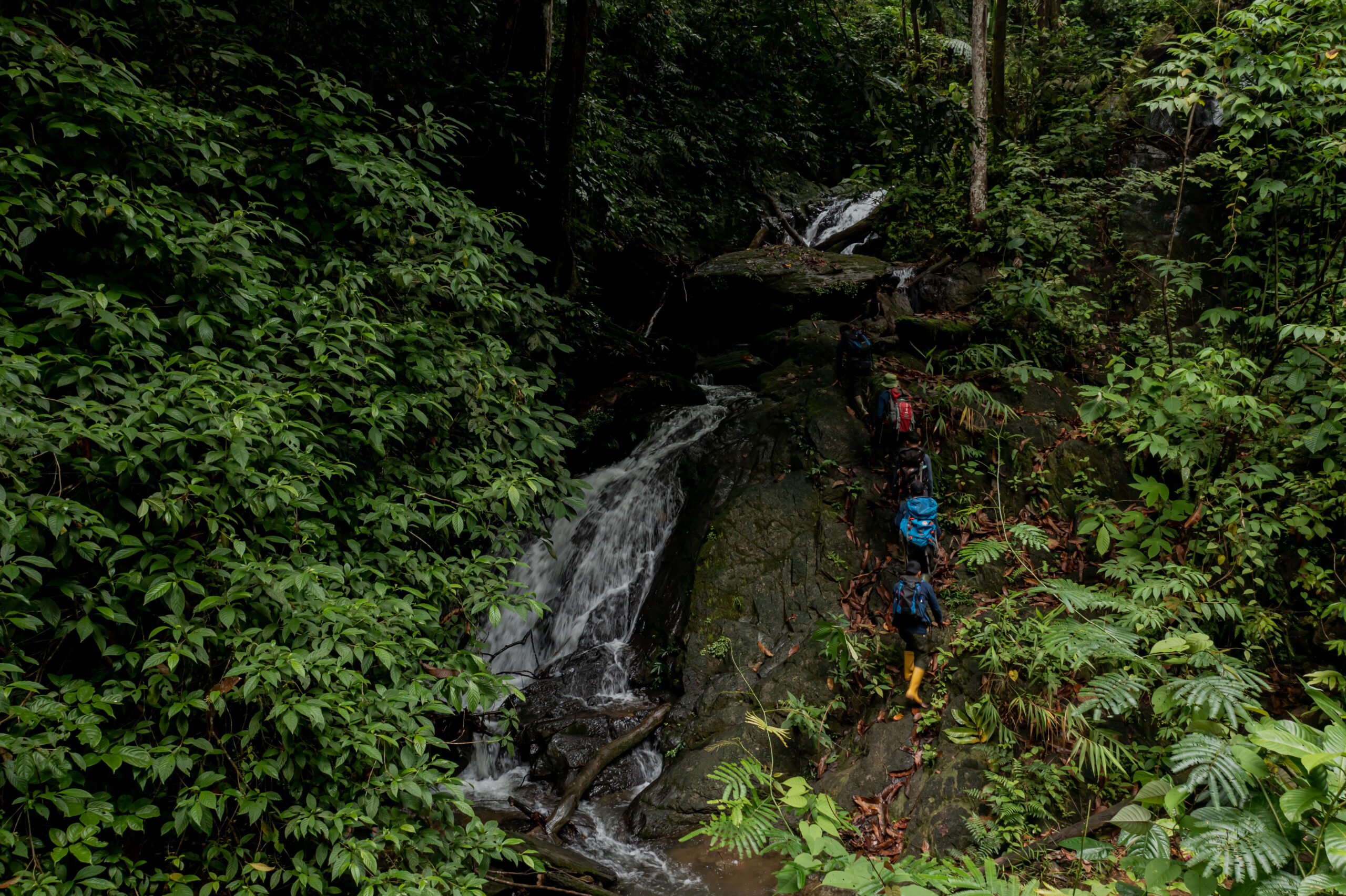
Bunin community forest patrol group monitoring their village forest area (RAN/Rifky)
Customary forests and territories also overlap with government-allocated concessions of palm oil companies that are in the supply chains of major brands. Nestlé and Unilever identified this problem when they assessed the forest footprints of their supply chains in Aceh. Since publishing their footprints, neither Nestlé nor Unilever have taken adequate additional steps to map the extent of customary forests impacted by their sourcing of palm oil from Aceh. PepsiCo and Unilever have also failed, to date, to ensure the jurisdictional programs they have set up with governments have advanced legal recognition of customary forests. Hopefully, this moment marks a change in direction and customary rights holders, Acehnese civil society organizations, global brands, and governments can work together to advance the legal recognition of customary forests across Aceh.
Another serious issue that needs resolution occurs where customary forests overlap with the boundaries of protected areas. The failure to delineate the boundaries for protected areas in the field through processes that respect the rights of Indigenous Peoples to give or withhold their Free, Prior and Informed Consent to development or conservation of their territories with customary rights has exacerbated conflicts between conservation authorities and customary communities. This situation is an issue in parts of the Gunung Leuser National Park in the north-east of the Leuser Ecosystem and in Rawa Singkil Wildlife Reserve in Aceh Selatan in the south-west of the landscape. Both of these protected areas are located within the 6.4 million acre Leuser Ecosystem.
One mukim that has been impacted by the failure to delineate the boundary and enable the participation of the customary communities in the management of the Rawa Singkil Wildlife Reserve is Kemukiman Buloh Seuma, in Trumon in Aceh Selatan. The Buloh Seuma settlement consists of three villages; Raket Village, Teungoh Village, and Kuta Padang Village. The residents of Raket Village now live in the coastal area in Aceh Selatan, but originally lived far inland at the headwaters of the Buloh Seuma river. In the 18th century, Mukim Buloh Seuma was part of the Trumon Kingdom. They have governed and managed the area for hundreds of years. The Indigenous community are pepper producers and collectors of forest products, especially forest bee honey. For hundreds of years, Mukim Buloh Seuma has implemented customary arrangements in management and rights ownership of tualang wood (beehive wood), which is scattered in swampy peat forests in Singkil. These villages are currently seeking agreements on the boundaries of their territories because the national government is in the midst of a program to delineate the boundaries of the Rawa Singkil Wildlife Reserve.
The lack of clarity over boundaries with communities with legitimate customary rights is increasingly being used as a scapegoat for significant encroachment of illegal palm oil plantations into the Rawa Singkil Wildlife Reserve––as shown in RAN’s Carbon Bomb Scandals report.
There is a significant opportunity to ensure that “forest positive” jurisdictional programs that are established by major brands ––such as PepsiCo, Unilever, Nestlé, Mondelēz, and Colgate Palmolive, –– in partnership with traders, local governments and customary rights holders advance local bylaws and participatory mapping efforts that enable the recognition of customary forests. There is hope that the governments of Aceh and Indonesia can once and for all address overlapping claims with palm oil companies and revoke palm oil concessions on lands proposed for customary or village forests.
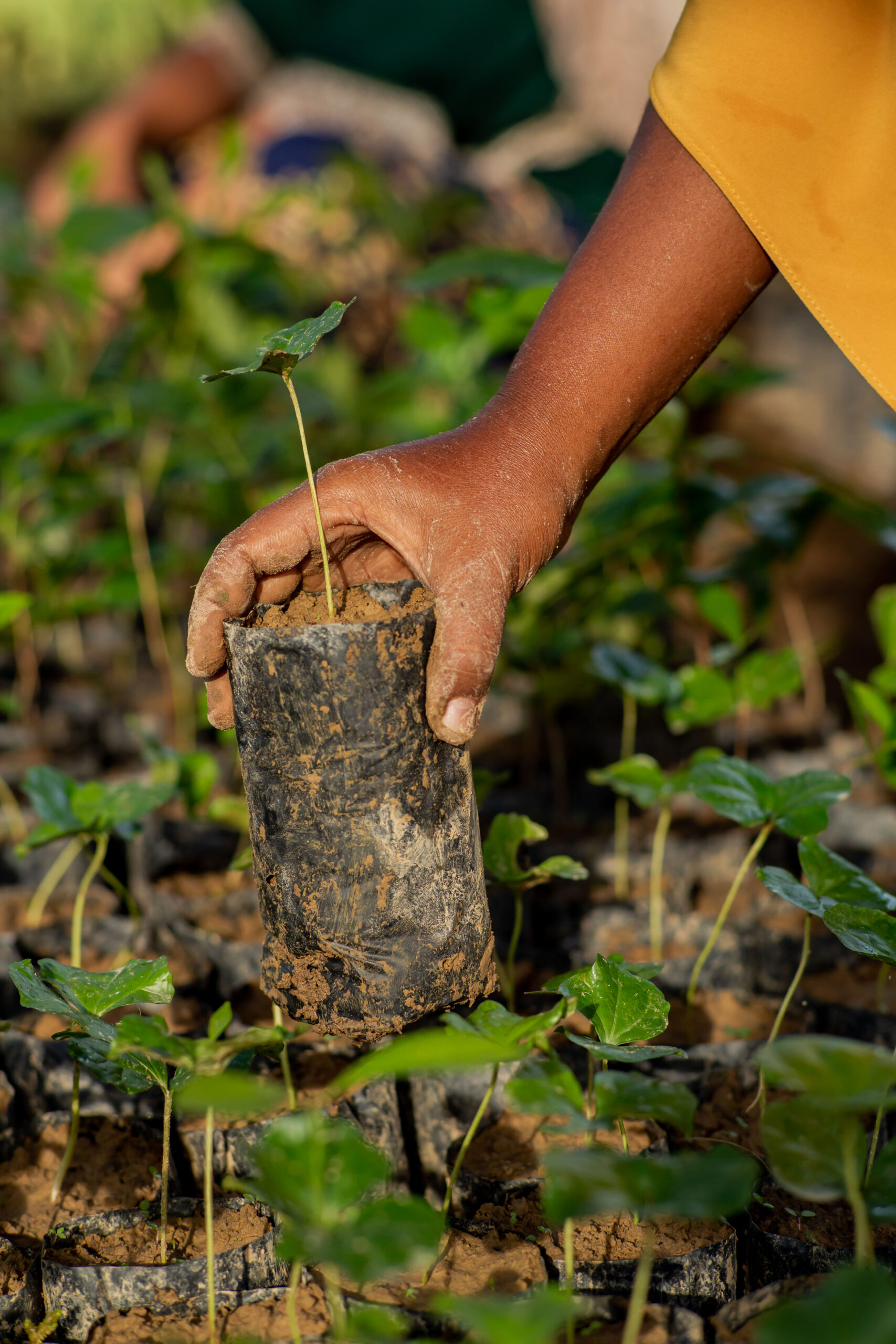
Brands can work together with governments to support communities, like the Bunin village, to protect and managing their forests (RAN/Rifky)
